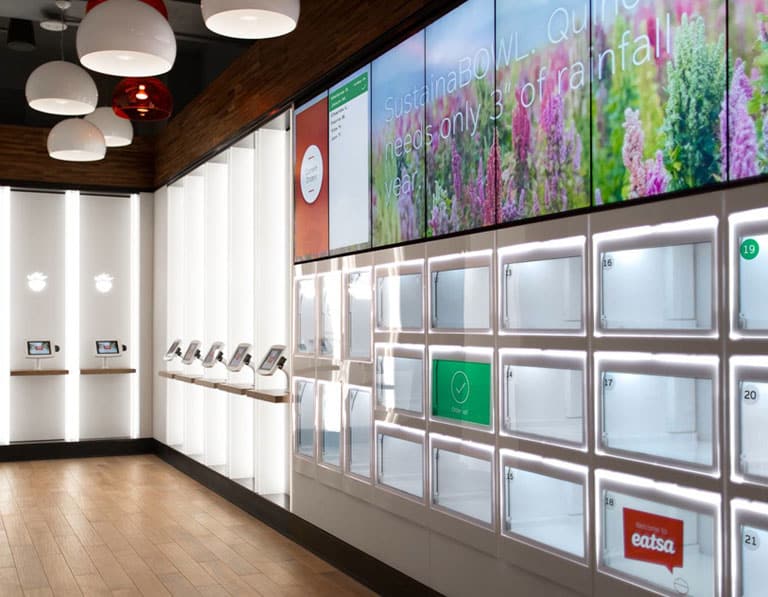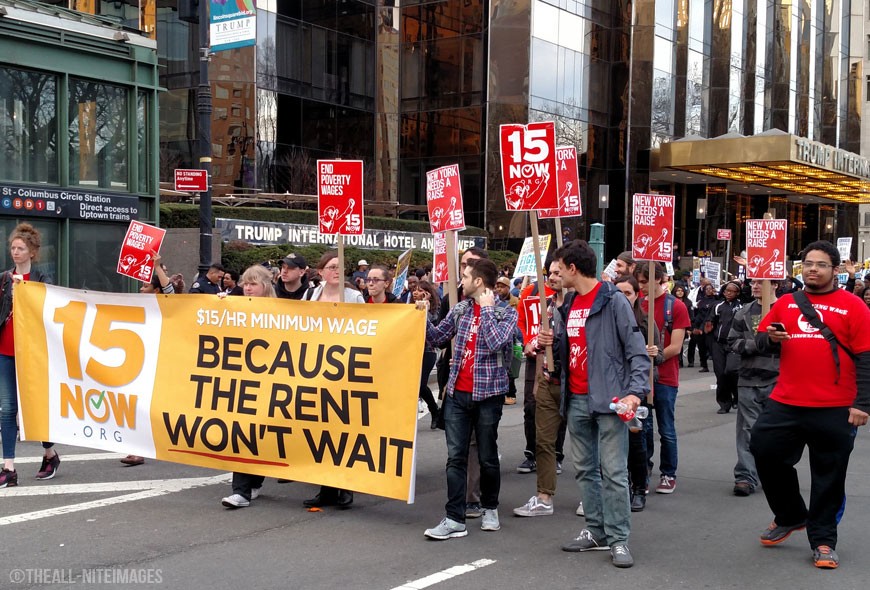Can U.S. workers afford a minimum wage hike?
The debate over minimum wage increases has heated up again, thanks to the 2016 election and cities across the country voting for new minimum wage increases. Millennial favorite Bernie Sanders attracts voters under 30 by promising that as President he would institute a “living wage” of fifteen dollars per hour in America. When you’re anxious about your job prospects, a wage guarantee sounds great.
But like most things that sound too good to be true, minimum wage increases have a catch, unintended consequences for the people they’re intended to help. Increasing the minimum wage can lead to job loss, stifling business growth and disproportionately hurt young people.
Government intervention
“There is no ‘free lunch’ when the government mandates a minimum wage”, writes former deputy assistant secretary of the U.S. Department of Labor, Mark Wilson in a report for the Cato Institute. “If the government requires that certain workers be paid higher wages, then businesses make adjustments to pay for the added costs, such as reducing hiring, cutting employee work hours, reducing benefits, and charging higher prices.”
When we Millennials think business, we often think of large corporations. In fact, small businesses account for 49.2 % of private-sector employment. That’s right, mom and pop shops, restaurants, delivery services, small white-collar firms, etc, create almost half of all jobs in the U.S. What’s more is that small businesses often operate under relatively small margins – the amount of money it takes to pay bills to run said company and the amount of revenue in the door.
When minimum wage requirements go up, the amount of money it takes these businesses to operate goes up too. Unfortunately that leaves these businesses with a choice between passing on the added cost to their customers, cutting hours to keep employees or just cutting jobs all together. This means that for some unlucky employees, they will lose their jobs and those who stay may also be given less hours.
Cities across America embrace minimum wage hike
Seattle recently increased its minimum wage to eleven dollars per hour effective April 1, 2015, with a total increase to fifteen dollars per hour by 2017. The effects of the current and looming increases had already begun to take effect in the restaurant industry by May 2015. According to Mark Perry, an AEI scholar and professor of economics and finance at the University of Michigan’s Flint campus, “The loss of 1,000 restaurant jobs in May following the minimum wage increase in April was the largest one month job decline since a 1,300 drop in January 2009, again during the Great Recession.”
What’s worse is that lower skilled and younger workers are hurt the most by these wage increases. If employers have fewer positions available, they are more likely to chose older workers with more experience.
Take Chicago for example, where the minimum wage is currently ten dollars per hour and is slated to become $13/hr by 2019. According to a recent report from the University of Illinois at Chicago’s Great Cities Institute, 47% of black men in Chicago between the ages of 20-24 were out of school and work in 2014. That is a staggering statistic – it is nearly half. The lack of even entry level minimum wage positions not only deprives these young men of wages today, but prevents them from gaining work experience for the future.
Mandated policy affects women most
Another popular argument for increasing minimum wage is that it will help women. Women do make up 54.7% of employees making less than fifteen dollars per hour, but the women who work in these jobs are not who you’d expect. Only 6.1% of minimum wage workers over 24 years-old are single parents working full-time. Of those workers, single mothers with little to no education are hit the hardest by minimum wage increases.
In a study for the Economic Policy Institute, Joseph Sabia, associate professor of economics, San Diego State University found that:
“…despite increased wage rates among single mothers who keep their jobs, the reduction in employment and hours causes an 8.8 percent reduction in net income. When combined with slightly more educated single mothers (those with a high school diploma), the results are only slightly less severe.”
Single mothers are not only at risk of losing their jobs due to employer cutbacks, but hourly cutbacks can reduce their wages to the point where the minimum wage increase is essentially erased. What’s worse is that single mothers have less flexible schedules than other minimum wage employees, making them potentially more vulnerable to cutbacks.
It’s always the little guy that gets hurt
The unintended consequences of minimum wage increases are serious for those affected by them. Poverty, high costs of living and unemployment are complex issues with many moving parts and affected parties. On the surface, the symptoms may seem like they are easy to fix, but in turn, suggested government-backed solutions may often exacerbate the problem instead.
Minimum wage hikes are appealing in their simplicity, but peel back the surface and they’re messier than expected.











